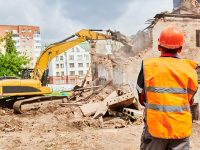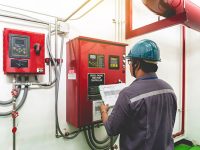Working in confined spaces increases health and safety risks. These spaces simply aren’t designed to be occupied by people. Dangers of these high-risk work environments range from minor discomfort to serious injury or death.
The hazards of working in cramped spaces are not always immediately apparent and may change in the same space from one day to the next.
If you employ people who will be working in a confined space, you’re required by law to control the risks. Here, you’ll find out all you need to know about the dangers of working in confined spaces and how to assess and manage the risks.
What is Classed as a Confined Space?
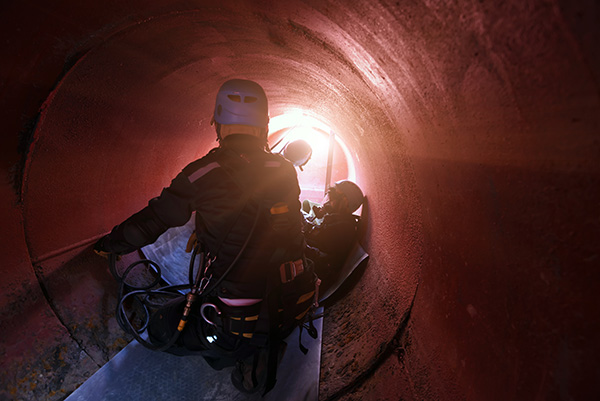
In general terms, a confined space is any area where there is insufficient room for an individual to move around freely. For work health and safety purposes, a confined space refers to a wholly or partially enclosed space that’s likely to pose hazards.
Confined spaces are commonly found in structures such as:
-
Storage tanks.
-
Chimneys.
-
Silos.
-
Containers.
-
Wet and dry wells.
-
Tunnels.
What Are the Dangers of Working in a Confined Space?
Working in a confined space poses multiple hazards, including:
-
Dangerously low oxygen levels that can cause mental confusion, nausea, weakness, loss of consciousness and death.
-
Contaminated airborne particles that can result in asphyxiation or serious respiratory diseases.
-
Gases or vapours that may spark an explosion or fire.
-
Engulfment – crushing or suffocation when trapped by solid or liquid materials.
Certain confined spaces – like sewers and grain silos – may contain biological hazards such as fungi, viruses or bacteria that can cause respiratory problems and dermatitis.
Other risks of working in a confined space include:
-
Mechanical hazards. Plant such as blenders and mixers may result in entanglement or crushing, causing serious injuries.
-
Electrical hazards. Electric shocks or burns can be caused by exposed electrical terminals and wet surfaces.
-
Hazardous substances. The likelihood of contact with a hazardous substance increases in a confined space. Surface contaminants can cause burns, skin irritation or dermatitis, and result in ongoing systemic issues.
-
Hazardous noise. Sounds generated in a confined space may be amplified by bouncing off hard surfaces. Exposure to excessive noise levels can result in hearing loss or tinnitus (ringing sounds in the ears).
-
Exhaustion. Physical constraints of working in a confined space make manual work more difficult. This can be exacerbated by use of personal protective equipment that restricts mobility.
Another problem with confined spaces is that in the event of an accident, small entrances and exits make it difficult to get rescue equipment into the area or extract injured workers.
Hidden Hazards of Working in Confined Spaces
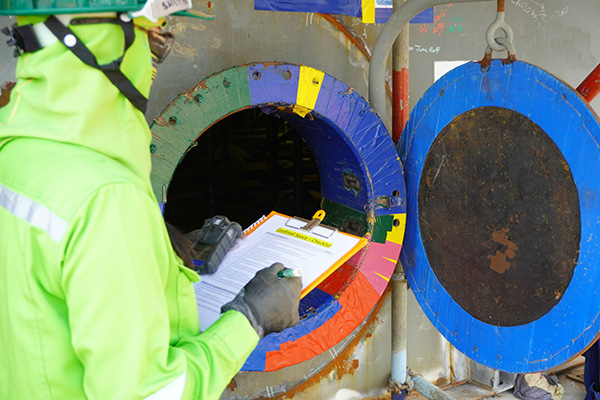 Dangers lurking in confined spaces are not always obvious – undetectable by sight or smell. If not identified, assessed and controlled, these atmospheric hazards could result in serious injury or illness or even death.
Dangers lurking in confined spaces are not always obvious – undetectable by sight or smell. If not identified, assessed and controlled, these atmospheric hazards could result in serious injury or illness or even death.
Ventilation is often poor in restricted spaces, which can allow a dangerous atmosphere to develop quickly, and the smaller the space, the greater the problem.
Insufficient ventilation can result in lack of oxygen or presence of airborne contaminants. This presents a significant risk when working in confined spaces.
WHS (Workplace Health and Safety) working in confined spaces regulations stipulate specific measures for managing the risk, such as:
-
Ensuring adequate levels of oxygen.
-
Providing respiratory equipment.
-
Purging or ventilating contaminants in the atmosphere
Assessing the Risks of Working in Confined Spaces
Before starting work that will entail entry into a confined space, as an employer you need to carry out a risk assessment.
Things to consider include:
-
Which workers will be at risk.
-
Sources of potential danger.
-
Effectiveness of existing control measures.
This should enable you to identify hazards arising from factors such as:
-
The physical work environment.
-
How work is carried out.
-
Equipment and materials to be used.
Bear in mind that many hazards of working in a confined space are invisible to the naked eye – toxic gases, for example. So, testing and monitoring the atmosphere in a restricted space is essential.
Once you’ve completed your risk assessment, you’re equipped with the information you need to implement an effective risk control strategy.
Managing the Risks of Working in Confined Spaces
Confined space risk management involves eliminating or minimising the threat to health and safety.
Risks can be eliminated by avoiding the need to enter a confined space. Ways to work outside the space may include use of:
-
Remote cameras for internal inspection.
-
Remotely operated devices to clear blockages.
-
A hook to retrieve an object dropped into the space.
If it’s necessary to clean inside a confined space, devices like a high-pressure hose can be inserted through an access hatch.
Minimising risks
If it’s not reasonably practicable to eliminate risks, they must be minimised by measures such as:
-
Isolating moving or electrical parts.
-
Ensuring extraction ventilation.
-
Changing work practices to lessen time inside the confined space.
-
Providing training on working with confined space risk control measures in place – employees have a duty to take reasonable care of their own health and safety and that of others.
-
Use of personal protective equipment (PPE) such as gloves, boots and hard hats.
Communication and Safety Monitoring
You need to ensure people working within a confined space have a continuous channel of communication with someone outside the space. Conditions inside the area should also be monitored by a person stationed on standby near the space, who can ideally see the work being done.
These measures are crucial to summon help in an emergency, and you should have rescue equipment immediately available.
Procedures should be in place to indicate when any worker is in a restricted space – by using tags or a signage, for instance. Signs must also be set up to prevent entry of anyone not involved in the work. Security measures such as locks and fixed barriers also need to be installed.
Maintaining and Reviewing Risk Control Measures
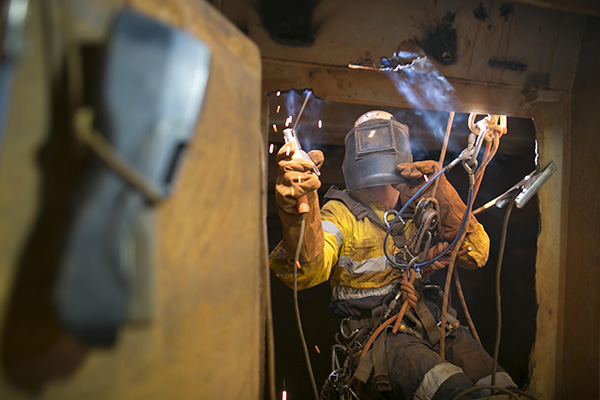 Risk control measures for confined spaces have to be maintained and reviewed to make sure they remain effective.
Risk control measures for confined spaces have to be maintained and reviewed to make sure they remain effective.
This includes checking that controls are:
-
Fit for purpose.
-
Suitable for the nature and duration of the work.
-
Being implemented properly.
Procedures should be guided by a schedule of inspections and maintenance including details of:
-
Equipment to be inspected.
-
Frequency and type of inspection.
-
Action to take on discovering faulty equipment.
Suppliers or manufacturers should be consulted for product-specific requirements. You must stop using equipment as soon as any signs of excessive wear or other defects are detected.
Need Help on Managing the Risks of Working in Confined Spaces?
Managing the risks of working in confined spaces is a complex task with multiple considerations and technical aspects essential to keep everyone involved safe from harm. Responsible employers who prioritise health and safety seek advice from experts when considering how to eliminate or minimise the risks of working in tight spaces.

